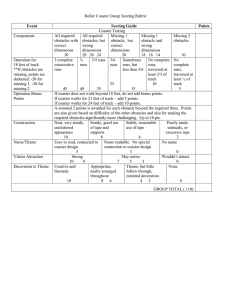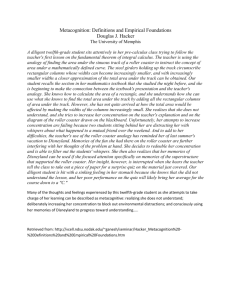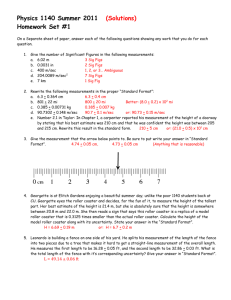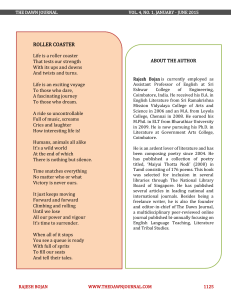Document 10778243
advertisement
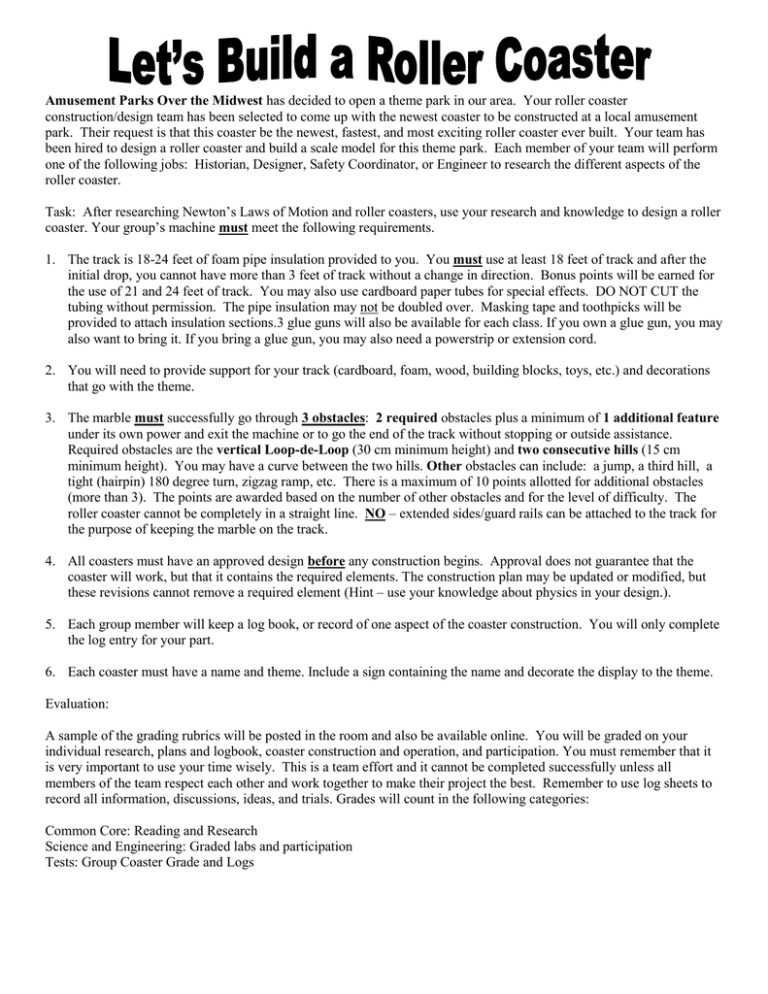
Amusement Parks Over the Midwest has decided to open a theme park in our area. Your roller coaster construction/design team has been selected to come up with the newest coaster to be constructed at a local amusement park. Their request is that this coaster be the newest, fastest, and most exciting roller coaster ever built. Your team has been hired to design a roller coaster and build a scale model for this theme park. Each member of your team will perform one of the following jobs: Historian, Designer, Safety Coordinator, or Engineer to research the different aspects of the roller coaster. Task: After researching Newton’s Laws of Motion and roller coasters, use your research and knowledge to design a roller coaster. Your group’s machine must meet the following requirements. 1. The track is 18-24 feet of foam pipe insulation provided to you. You must use at least 18 feet of track and after the initial drop, you cannot have more than 3 feet of track without a change in direction. Bonus points will be earned for the use of 21 and 24 feet of track. You may also use cardboard paper tubes for special effects. DO NOT CUT the tubing without permission. The pipe insulation may not be doubled over. Masking tape and toothpicks will be provided to attach insulation sections.3 glue guns will also be available for each class. If you own a glue gun, you may also want to bring it. If you bring a glue gun, you may also need a powerstrip or extension cord. 2. You will need to provide support for your track (cardboard, foam, wood, building blocks, toys, etc.) and decorations that go with the theme. 3. The marble must successfully go through 3 obstacles: 2 required obstacles plus a minimum of 1 additional feature under its own power and exit the machine or to go the end of the track without stopping or outside assistance. Required obstacles are the vertical Loop-de-Loop (30 cm minimum height) and two consecutive hills (15 cm minimum height). You may have a curve between the two hills. Other obstacles can include: a jump, a third hill, a tight (hairpin) 180 degree turn, zigzag ramp, etc. There is a maximum of 10 points allotted for additional obstacles (more than 3). The points are awarded based on the number of other obstacles and for the level of difficulty. The roller coaster cannot be completely in a straight line. NO – extended sides/guard rails can be attached to the track for the purpose of keeping the marble on the track. 4. All coasters must have an approved design before any construction begins. Approval does not guarantee that the coaster will work, but that it contains the required elements. The construction plan may be updated or modified, but these revisions cannot remove a required element (Hint – use your knowledge about physics in your design.). 5. Each group member will keep a log book, or record of one aspect of the coaster construction. You will only complete the log entry for your part. 6. Each coaster must have a name and theme. Include a sign containing the name and decorate the display to the theme. Evaluation: A sample of the grading rubrics will be posted in the room and also be available online. You will be graded on your individual research, plans and logbook, coaster construction and operation, and participation. You must remember that it is very important to use your time wisely. This is a team effort and it cannot be completed successfully unless all members of the team respect each other and work together to make their project the best. Remember to use log sheets to record all information, discussions, ideas, and trials. Grades will count in the following categories: Common Core: Reading and Research Science and Engineering: Graded labs and participation Tests: Group Coaster Grade and Logs

